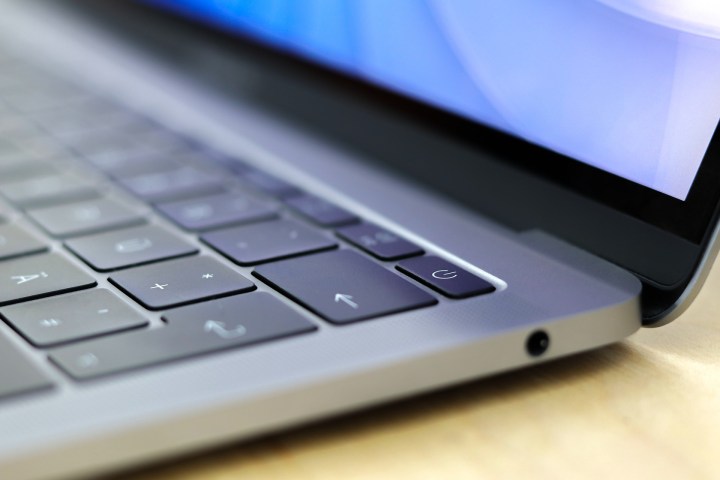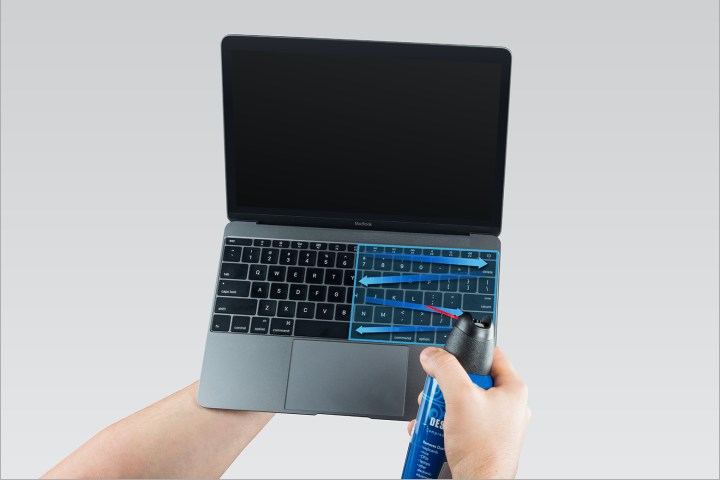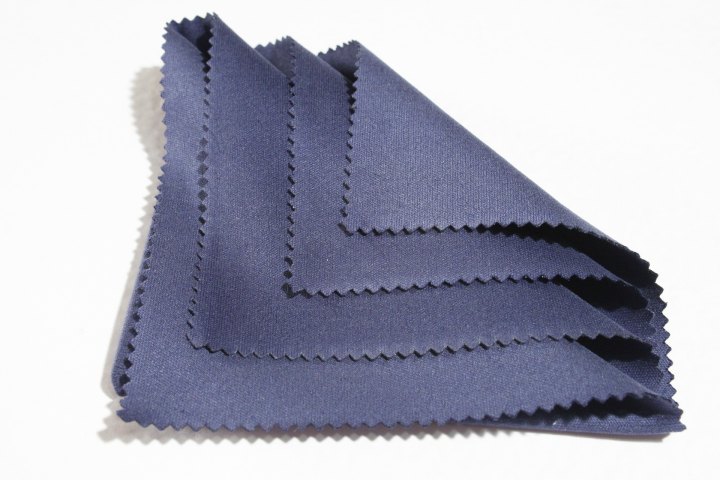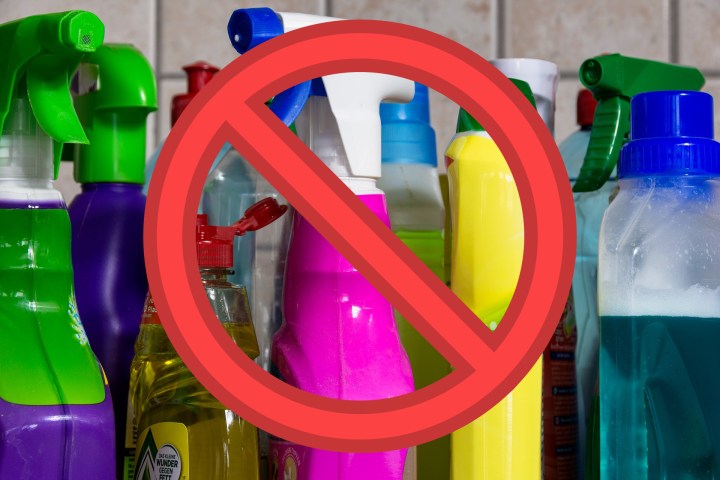
Dust, crumbs, and gunky build-up are all bound to find their way onto your MacBook keyboard at some point. If you’re having trouble with a specific key or simply feel it’s time to give your keyboard a good cleaning, there are some dos and don’ts for the process.
Here, we’ll walk you through how to clean a MacBook keyboard using compressed air. We’ll also include what Apple recommends for getting build-up off your keys and which types of products to avoid.
How to clean a MacBook keyboard
Step 1: Before you clean your MacBook keyboard, you should turn off, unplug the computer, and detach any accessories.
If you’re using an external keyboard that you want to clean, turn it off and remove the batteries.

Step 2: Be sure to insert the straw that comes with the can of compressed air. Remember to keep the straw approximately one half of an inch from the keyboard when you spray.
Also, be sure to keep the can of compressed air at its normal angle. Do not turn it upside-down. You can review the instructions on the can as well.
Step 3: Make sure you have a good grip on your MacBook as you’ll be turning it at different angles to clean the keyboard.
First, open the MacBook and turn it about 75 degrees facing the screen downward. Then, spray the compressed air in a zig-zag motion from left to right across the keyboard and back again.

Step 4: Turn your MacBook to one side and use the same swiping motion to spray the compressed air on the keyboard. Then, turn your computer on its other side and do the same thing.
If you have an external keyboard, you can follow the same process for turning it as you spray the air.

Additional tools for cleaning your keyboard
If you have a particular key or two on your keyboard that has a grimy build-up, you may want to clean those keys specifically. You can use a soft, dry, lint-free cloth to wipe the keyboard, but if you need something stronger, Apple suggests you can use a 70% isopropyl alcohol wipe, a 75% ethyl alcohol wipe, or a Clorox disinfecting wipe on the hard, nonporous surfaces of your Apple devices, like the display and keyboard. Just make sure not to use anything with bleach of hydrogen peroxide in it.

What to avoid when cleaning your keyboard
Here are a few things to stay away from if you plan to clean your keyboard a further.
- Do not use aerosols, bleach cleaners, or anything abrasive.
- Do not get moisture or liquid in the openings.
- Do not wipe too aggressively or you could damage the keyboard.
- Do not spray any cleaner directly on the keyboard.
- Do not use products that contain bleach or hydrogen peroxide.
If after cleaning your MacBook keyboard, you’re still experiencing problems with certain keys, you may need to contact Apple for keyboard repair information.



